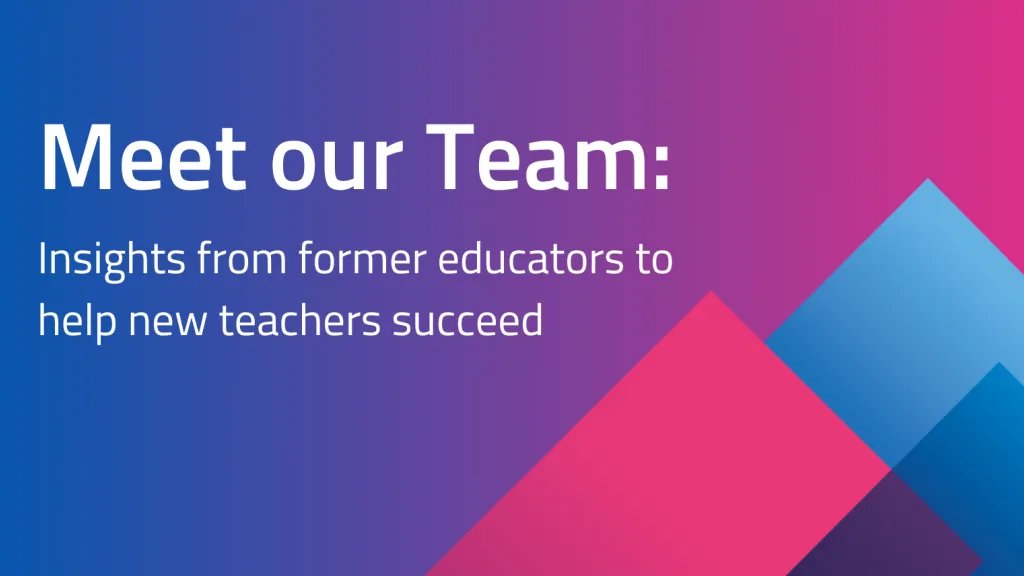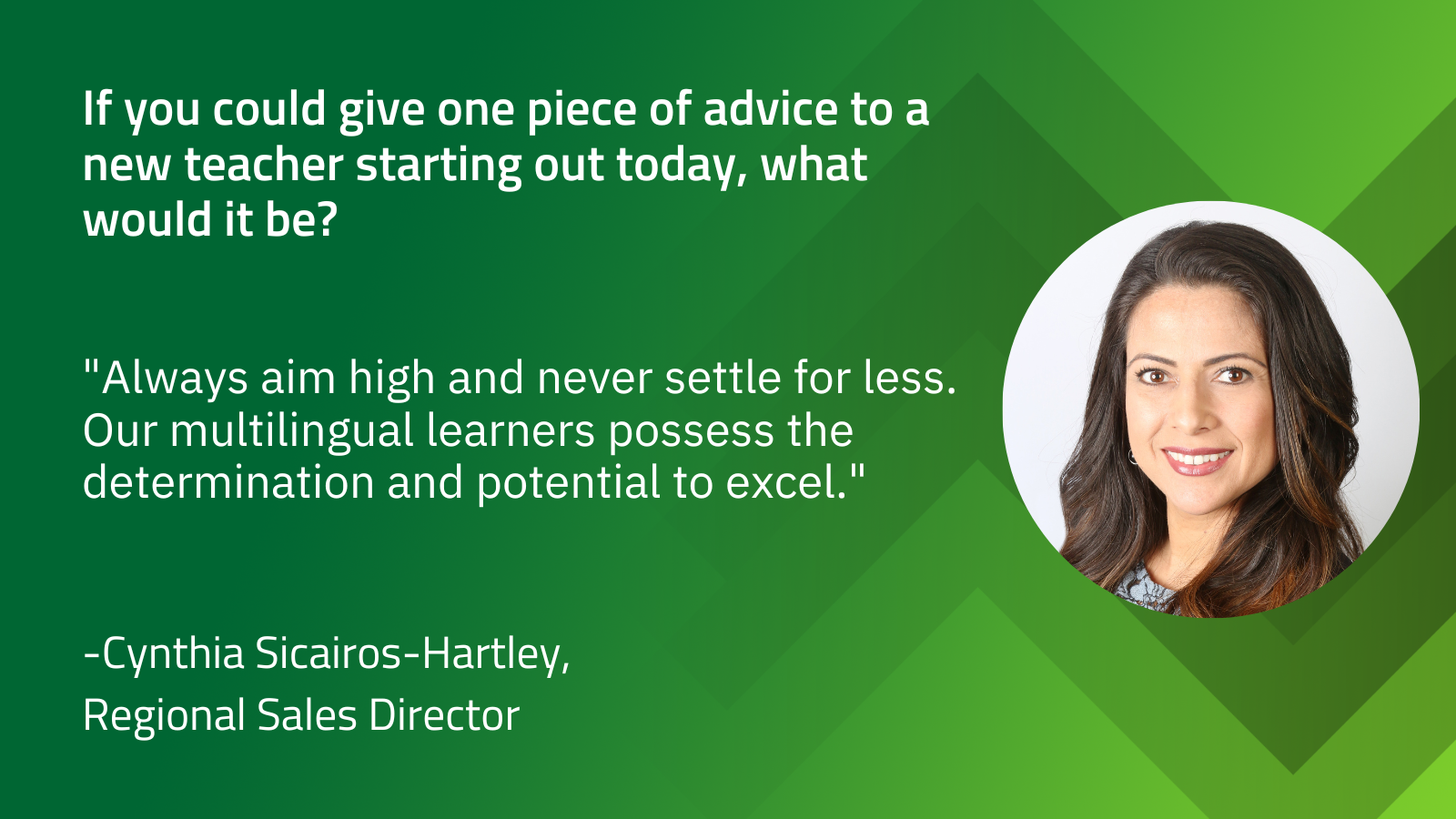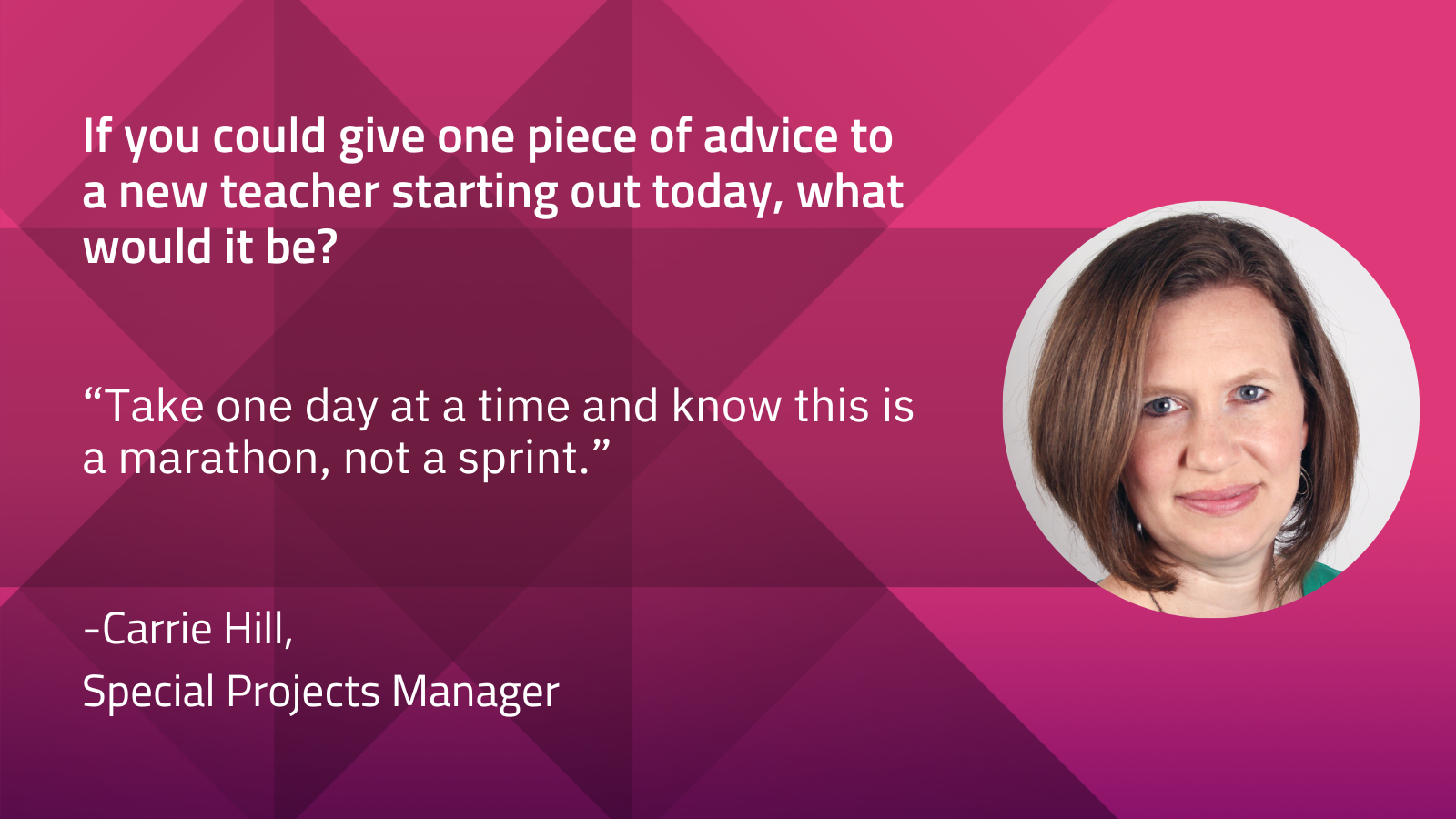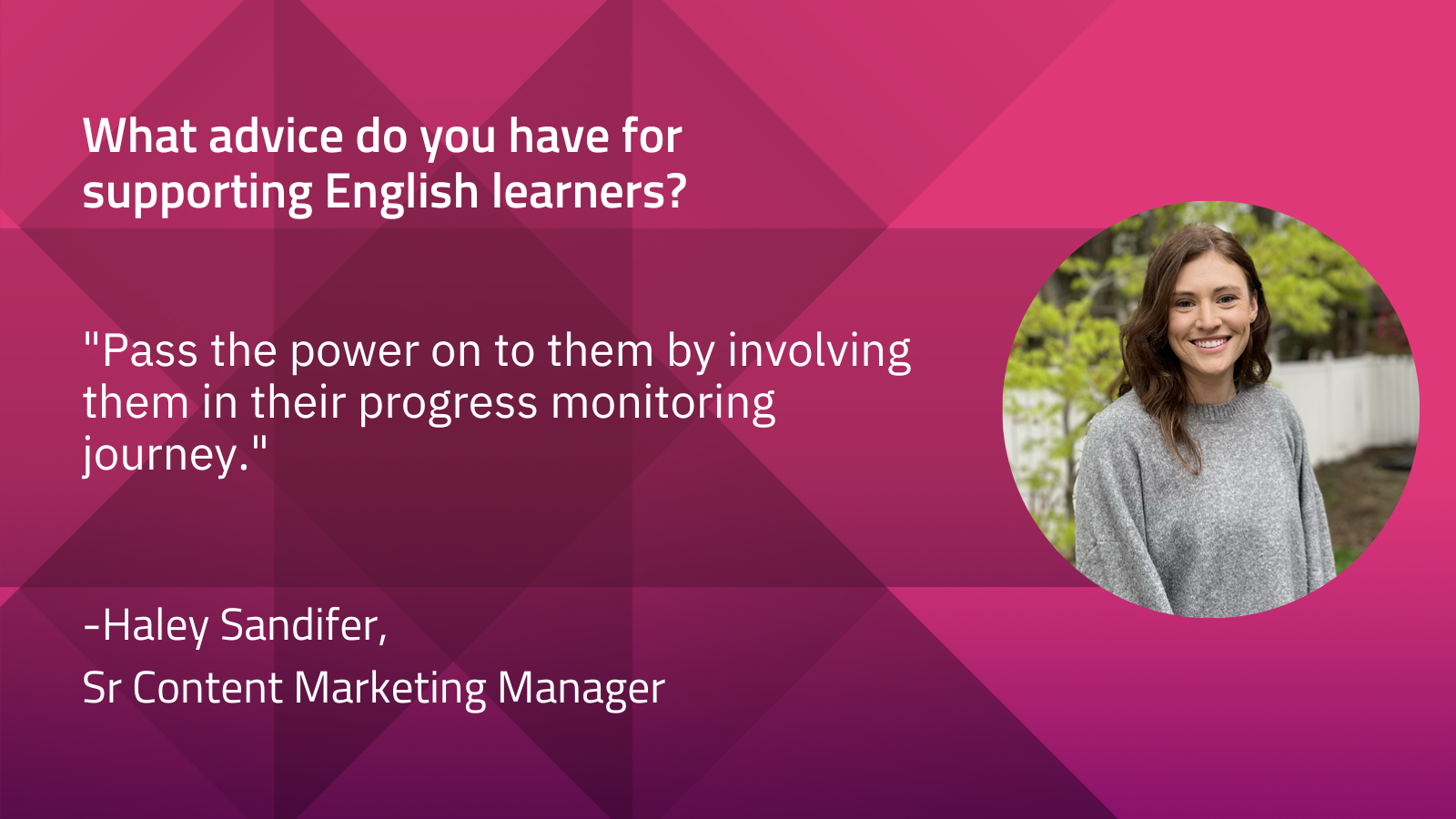Meet our Team: Insights from former educators to help new teachers succeed


Meet our Team: Insights from former educators to help new teachers succeed
Starting out as a new teacher can be both exciting and overwhelming. As you step into the classroom for the first time, it’s important to remember that building strong relationships with students and families, creating an inclusive environment, and taking care of yourself will lay the foundation for success. We asked former educators at Ellevation, Jay Muller, Sr Partner Development Manager; Carrie Hill, Special Projects Manager; Haley Sandifer, Sr. Content Marketing Specialist; La-Toya Facey-Walker, Account Manager; and Cynthia Sicairos-Hartley, Regional Sales Director, to share their insights and advice to help you navigate the challenges and rewards of this journey.
What advice would you give for building trust and rapport with students?
Jay Muller: Make sure to consistently listen and take a genuine interest in what they love to do outside of school. Every student carries this unique, wonderful spark that deserves to be seen, nurtured, and supported holistically throughout the year. When students feel understood, they’ll behave better, thrive academically, and enjoy coming to school.

Carrie Hill: Ask them about their lives and not just work on acquiring English or whatever subject you are teaching.
Haley Sandifer: I liked to invite a student or a pair of students to have lunch with me in the classroom on Friday each week. I would make sure to get through everybody once before any repeats, but it was a chance for the students to feel special and to get to know each other better outside of just academic/whole class context.
What are some practical ways you made your classroom feel welcoming and inclusive for all students?
Jay Muller: At the start of each year, I’d have students complete a “Who am I?” project, which allowed them to share their identities. This gave me the privilege as their teacher to understand them deeply from the get-go. I also made a habit of asking, “How are you?” and truly listening. If someone wasn't doing well, I’d dig deeper, offer support, and follow up later. It was crucial that my students knew I genuinely cared. Another key element was having zero tolerance for peer-to-peer disrespect. Any non-inclusive behavior was addressed immediately - never ignored. Once students realize they can’t get away with harmful language or actions, those behaviors start to disappear.
La-Toya Facey-Walker: During the first week, I focused on getting to know my students and used that insight to incorporate diverse instructional materials into my classroom library and environment. I fostered student voice, set clear and respectful expectations, and emphasized the celebration of individuality.
Haley Sandifer: I did a Donors Choose my first year of teaching to purchase a big selection of diverse character/storyline books for my classroom so every student felt represented in our library corner and the read alouds we did -plus these were a great starting off point for discussing different cultures and experiences of students.
How did you foster strong relationships with the families of your students, particularly when there were language or culture barriers?
Cynthia Sicairos-Hartley: To build a strong relationship with my students’ families, I prioritized open communication with both students and parents. I utilized various methods, such as newsletters, at-home family projects, student presentations embracing their roots, and monthly family literacy nights for parents to learn and connect. This approach created a welcoming environment where everyone felt comfortable sharing, allowing us all to learn and grow together.
Jay Muller: If the family spoke Spanish, I gave it my best shot. It meant a lot to them, since they were trying to learn English, and it showed I was willing to meet them halfway. Using app-based texting with built-in translation features became my go-to for communication. Even though I couldn’t speak other languages fluently, it still allowed me to connect genuinely and keep families updated on progress, behavior, and important classroom news.
Haley Sandifer: Home visits when possible, parent "office hours" after or before school every other week, and I tried to be outside a little early every morning to pick up my line so parents knew they had that opportunity to speak with me when needed.
How did you manage stress and avoid burnout, especially during challenging times?
Jay Muller: Hot yoga became my outlet. After long days, I’d hit the studio and sweat out all the stress and frustration. It was my way of resetting so that I could go home, cook dinner, sleep, and recharge for the next day. It really helped me manage the mental toll teaching can take.
Haley Sandifer: I liked to come early in the morning to prep so I could leave early enough most days after school and make sure I had time to do an activity I enjoyed - going for a hike, reading by the beach or at a coffee shop, etc. Sharing resources with other teachers and co-planning when possible to lighten the load, committing to communicating honestly about my experiences at school with close friends and family so stress or burnout wouldn't become an excuse to isolate and refuse help.
If you could give one piece of advice to a new teacher starting out today, what would it be?
Cynthia Sicairos-Hartley: One key piece of advice for new teachers starting out today is to always aim high and never settle for less. Our multilingual learners possess the determination and potential to excel, so it's important not to underestimate their capabilities. By consistently setting high expectations, you can inspire them to achieve their goals and aspirations.

Jay Muller: Buckle up. The road ahead isn’t easy, but it’s absolutely worth it. Kids are complex, and their needs are layered, which makes the work challenging. There’s a lot of pressure. But when you witness their personal and academic growth, you’ll remember why you chose this path.
La-Toya Facey-Walker: Stay flexible, patient, and open to learning. Prioritize self-care, set clear boundaries, and seek support from colleagues. Focus on what you can control and recognize and celebrate small wins. Additionally, building strong relationships with students is just as important as delivering effective instruction. Establishing those connections is a priority. Children are unlikely to learn from someone they don’t respect, so earning their trust is crucial for a successful school year.
Carrie Hill: Take one day at a time and know this is a marathon, not a sprint.

What advice do you have for supporting English learners?
Cynthia Sicairos-Hartley: To support English learners effectively, I encourage you to understand each student's unique background. Building these connections will empower you to nurture creativity and create individualized learning paths, leading to a more inclusive and personalized classroom environment. This approach will also provide English learners with a safe space that enhances their language interactions across all domains and across all content areas.
Jay Muller: Be compassionate. Your job is to build bridges for them - helping them move from one or more languages into a space where English becomes something they can access. Incorporating intentional word work and phonics, using supporting visuals, modeling deliberately, giving them plenty of processing time, and exercising tons of patience are the key elements of a successful approach.
Carrie Hill: Show them you care about them as a person.
Haley Sandifer: Knowledge is power - learn as much as you can about their prior experience with education/their family history etc. early on, do due diligence to figure out where they are at on their language learning journey right away, and pass the power on to them by involving them in their learning journey (data walls or folders where students can track their own goals and improvement was a great way for the early elementary students).

Teaching is a journey filled with both challenges and triumphs, and every educator’s experience is unique. As you embark on your own path, we hope this advice from seasoned teachers helps guide you through the complexities of building relationships with students and families, creating an inclusive environment, and maintaining your own well-being.